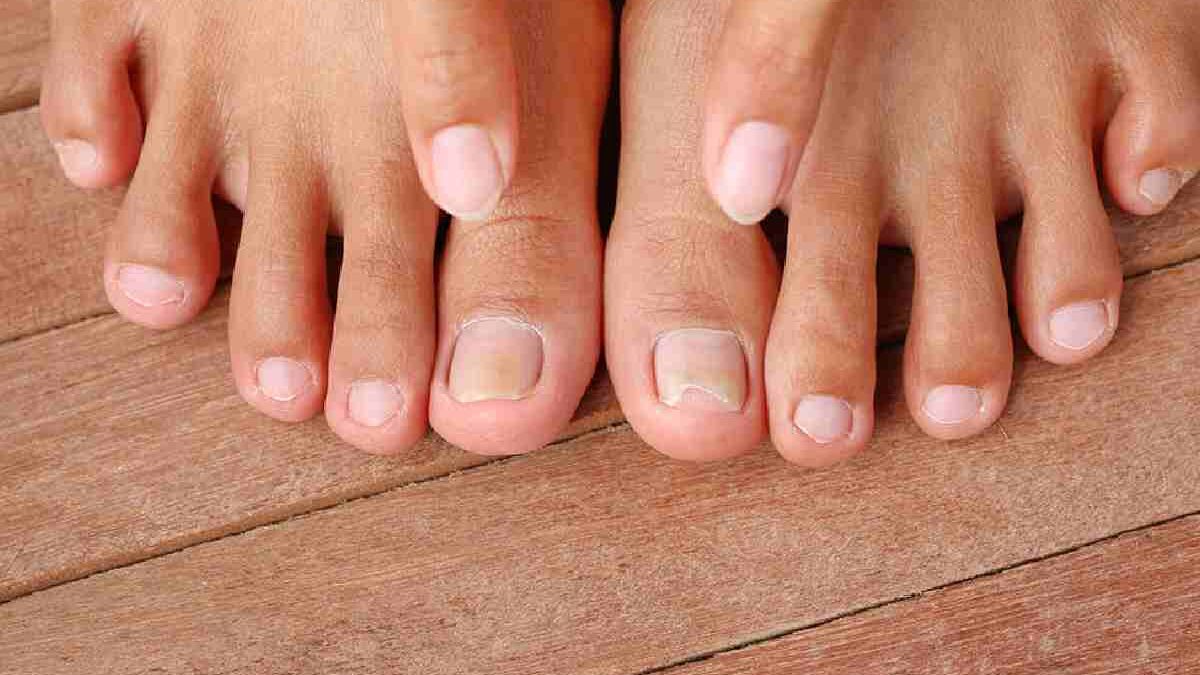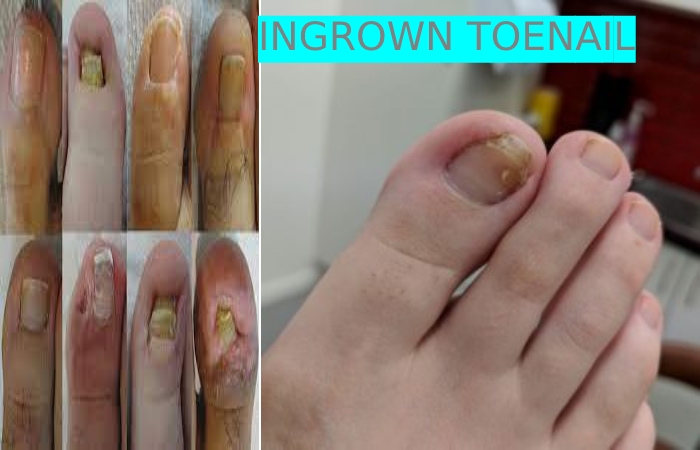Table of Contents
Ingrown Toenails – Explaining
Ingrown toenail pain can make it firm to stand or walk. But impacted toenail treatment is straightforward, and you can take steps to prevent it from trendy again. If you have a diseased ingrown toenail or a condition such as diabetes, see your health care provider for complete care.
An ingrown toenail is a foot complaint that grows once the toenail corner grows unhappy into the skin. It usually affects the big toe. Ingrown toenails often occur when people cut their toenails by tapering the corner of their toenails. If the toenail bends with the shape of the toe, it can grow into your skin. Ingrown toenails are shared and don’t usually pose a health risk to healthy people.
Likely to Have an Ingrown Toenail
Anyone can get an ingrown toenail. People at higher risk include adolescents, sportspersons and those who have
Diabetes
Severe nerve injury in the leg or foot
Poor blood circulation
An infection around the nail
How common are ingrown toenails?
Ingrown toenails are a common foot complaint. Two out of 10 individuals who see their healthcare provider for a foot problem have an ingrown toenail.
Common are Ingrown Toenails
Ingrown toenails are a common foot condition. Two out of 10 persons who see their healthcare provider for a foot problem have an ingrown toenail.
Symptoms and Causes of Ingrown Toenails
What causes an ingrowing toenail?
An ingrown toenail can have many causes
Imperfectly cut toenails. If you cut your toenails too short before a round, the nail may grow into the skin.
It is improperly fitted shoes.
They are tearing the angle of the nail.
Toe disturbance, such as knocking your toe or getting walked on.
Congenital (your foot shape) — for example, if your nail is more giant comparatively with your toe, or the surrounding tissue of the nail border naturally grows around your pin.
The Signs and Symptoms of a Diseased Ingrown Toenail
At first, an ingrown toenail can feel complicated and distended. If the nail produces into the skin or produces over the nail edge, microorganisms can enter. The nail might become infected. Signs of ingrown toenail pollution include:
Liquid or pus pending out of the toe.
Pain.
Redness or blackening of the area.
Swelling.
Toe feeling warm or hot.
Diagnosis and Tests
An ingrown toenail diagnosed
You can often establish an ingrown toenail by hand founded on your symptoms and how the toe looks.
Your healthcare breadwinner will likely diagnose an ingrowing toenail by inspecting it. They’ll observe the skin at the edge of the nail. They will identify an ingrown toenail if the skin is
We are growing over the nail.
It is swollen, tender, warm and red.
Tests Might work for an Ingrown Toenail
You classically don’t necessary any tests or X-rays to identify an ingrown toenail. When the toenail is severely ill in rare suitcases, your health care provider might take a sample culture to identify the infection. An X-ray may also be required in more severe illnesses.
Management and Treatment
How is an ingrown toenail treated?
You can treat an ingrowing toenail at home. These steps help control the contagion and prevent additional discomfort:
Immerse the base in warm water and Epsom salts twice a day today.
Keep the floor dry the rest of the time.
Lightly lift the advantage of the nail and place some cotton or dental floss between the pin and the skin—alteration of the pad every day.
Use an antibiotic cream and a dressing.
Wear generous shoes or sandals.
Use pain relievers such as ibuprofen or acetaminophen, if required.
Do I need a healthcare wage earner to treat an ingrown toenail?
Call your healthcare breadwinner if your symptoms haven’t improved within a few days or the nail looks worse.
You should also see your wage-earner as soon as possible if you develop an ingrown toenail and you have:
Diabetes.
Direct nerve damage.
Poor blood flow.
An infection.
An Ingrown Toenail Involve Surgery
Greatest of the time, an ingrowing toenail heals without surgery. In simple cases, your healthcare provider may need to surgically remove part of the nail—the way nail avulsion. Surgery saves the edge of the nail from rising inward and cutting into the skin. For children who keep getting ill ingrown toenails, permanently removing the pin container assistance.
During a partial or whole nail avulsion, your earner injects an anaesthetic into your toe. Then the provider cuts absent share or all of the toenail. It can take a few calendar months for the nail to regrow. For recurring in growing nails, these avulsion actions can be done permanently with the assistance of a chemical to kill the nail root.
Causes an Ingrown Nail
You’re more likely to get in growing nails when you:
Cut your toenails too short
Round your nail edges. To avoid ingrown nails, continuously trim traditional across.
Wear ill-fitting shoes or tight hosiery that media your nail into your toe
Injure your toe by bumping or overcrowding it
Put recurrent stress on your toes from a poor carriage or physical activity that stresses your feet, such as running, ballet, or soccer
Inherit genes that make you extra likely to have them
If the disorder causing the ingrown toenail endures, the skin that grows over your nail can lead to permanent changes in the tissue that can cause infection, more pain, and more swelling.
Are Some Ingrown Nail Treatments and Homebased Preparations
If your ingrown nail is situated ill, you must be able to treat it at home. To manage symptoms, you can:
Soak your feet. Reduce inflammation and tenderness by putting your feet in warm water for 15-20 minutes three to four times a day.
Keep your feet dry. Let your feet respire to avoid sweat or humidity.
Use a wedge to lift your nail. Put dental floss or a small part of cotton under the edge of your nail to help raise it as it grows out. Change it out daily.
Apply antibiotic cream. Cover your toe with a bandage afterwards to help defend it.
Pick helpful shoes. Select open-toed shoes or shoes with plenty of apartments in the toe. Don’t wear resoles.
Take pain relievers. Over-the-counter choices like acetaminophen or ibuprofen can help reduce sensitivity and inflammation.
If your symptoms don’t get better — or get worse — afterwards, you try home-based care; your doctor may need to treat the problem. They may try:
Treatment antibiotics. You may need oral or interesting medicine to help get rid of your infection.
You were exciting the nail. If your problem is mild and doesn’t include pus, your specialist can use a bandage to lift your pin and set it in a new position to help it grow above the skin.
You are removing some of your infected nails. Your doctor will become emotionless your toe before surgically cutting away the portion of the nail that’s mounting into your skin.
You are removing all of your infected nails. If you keep consuming ingrown nails on the same toe or finger, your doctor may take off your full pin. It can make income up to 4 months to produce back in. And it’s more likely to be distorted once it grows back.
ConclusionT
An ingrown toenail is annoying and painful but very treatable. Often, soaking the nail will improve symptoms within a few days. If it doesn’t get better, see your healthcare provider, who can treat it. Don’t attempt to cut the ingrown nail by hand at home. In the future, to stop ingrown toenails, wear roomy shoes and cut your nails old-style across, rather than narrowing them to the shape of your toe.


